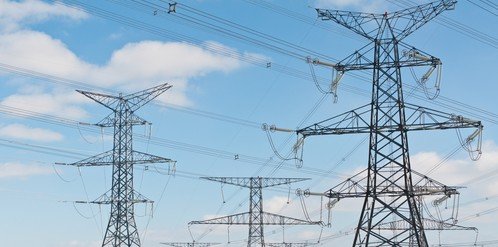Consumer interaction with the power grid typically begins at the electric meter. Beyond the electric meter are utility distribution lines, transformers, and substations. Further upstream are transmission lines and power plants. As energy consumers, we focus on the practical matters of rates and reliability. We want as much electricity as we need, whenever we want it, and at the lowest rate. However, looking beyond the meter can be helpful in understanding how the power grid is evolving and how those changes can affect New England electricity rates.
Electricity Grid
ISO New England (ISO-NE) is the power grid operator for this region. ISO-NE serves over 6.5 million New England households and businesses. They perform three primary functions. First, they are responsible for operating the regional power system. This system includes the power generation and electric transmission lines in Connecticut, Rhode Island, Massachusetts, Vermont, New Hampshire, and Maine. Second, ISO-NE administers the competitive wholesale electricity market in this region. Finally, they are responsible for power system planning.
Power system planning is a mixture of engineering, forecasting, and trend spotting. ISO-NE must account for changes in the power generation fleet. These include changes in fuel sources, new unit construction, and unit retirements. Transmission lines have limited capacities to move power from one point to another. Therefore, ISO-NE also identifies transmission line constraints by forecasting geographical changes in electricity demand along with existing and proposed power plant locations.
Energy Source Changes
Consumers should be aware of two major changes affecting ISO-NE system planning. The first is a shift toward natural gas-fired and renewable energy generation. The table below shows the dramatic shift in generation fuel sources over the past 15 years.
| Generation Source | 2000 | 2015 |
| Nuclear | 31% | 30% |
| Oil | 22% | 2% |
| Coal | 18% | 4% |
| Natural Gas | 15% | 49% |
| Hydro | 7% | 7% |
| Renewables | 8% | 9% |
The increase in natural gas-fired generation has reduced harmful power plant emissions. Pipeline constraints, however, are causing the difference between winter and summer gas prices to increase. Electricity rates mirror this seasonal variation in natural gas prices. Consumers and businesses can soften the impact of these seasonal rate variations by selecting plans with 12-month terms. Plans with 12-month or multi-year terms average out the price shocks and are easier on the household budget.
Hybrid Energy Grid
The second major trend affecting ISO-NE system planning is the move to a hybrid grid. A hybrid grid has a mixture of grid-connected and distributed generation. Grid-connected generation includes traditional power plants and large-scale renewable energy projects like wind farms. Distributed generation covers a wide-array of generation sources including rooftop solar systems. Distributed generation also includes community-owned generation and district heating projects.
The increase of distributed generation over the next decade will reduce the need for new transmission lines and allow for the retirement of aging fossil fuel power plants. This will affect the wholesale electricity markets, especially the capacity market. Consumers should see a benefit both in utility delivery rates and in competitive supplier generation rates.


